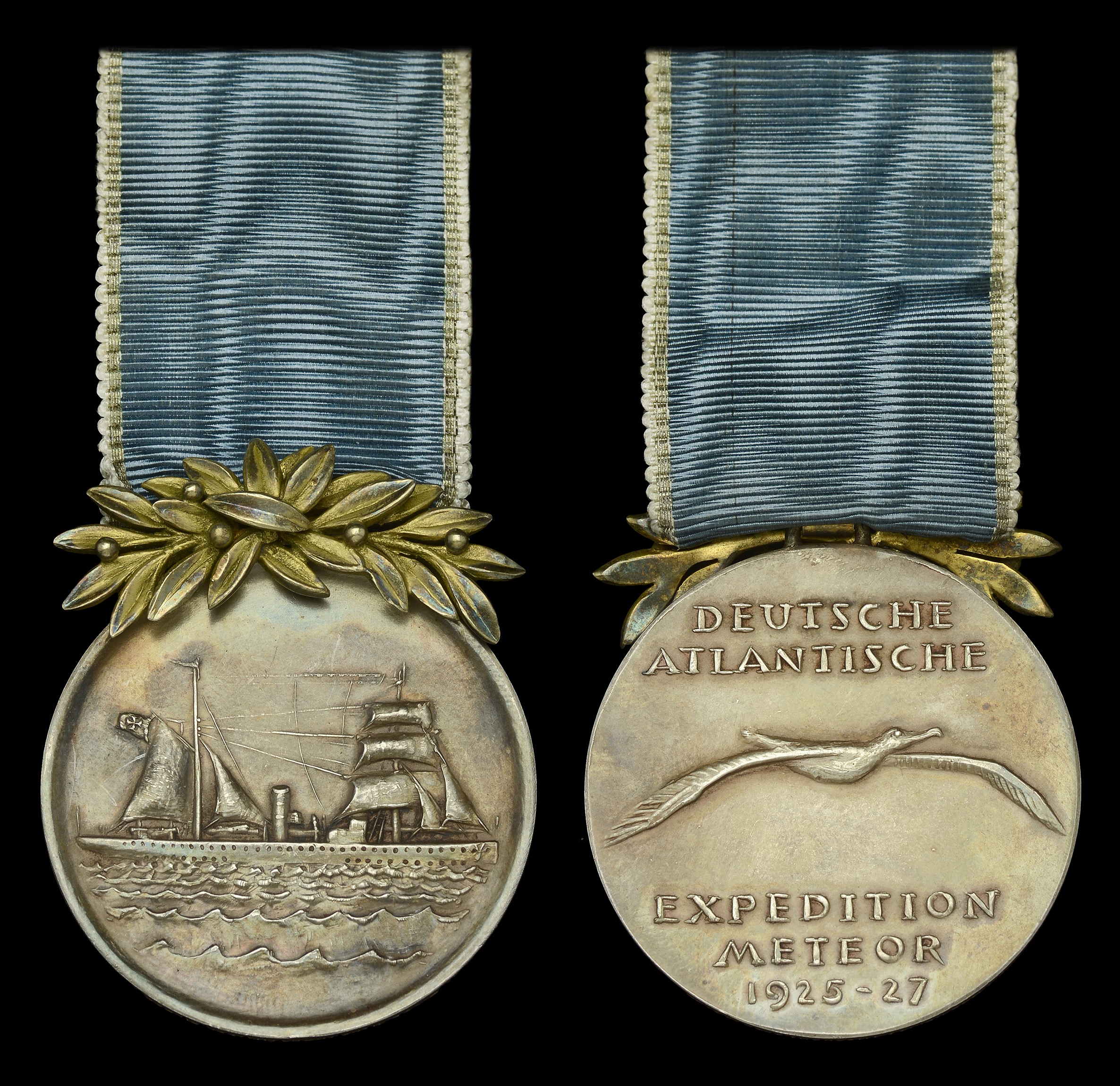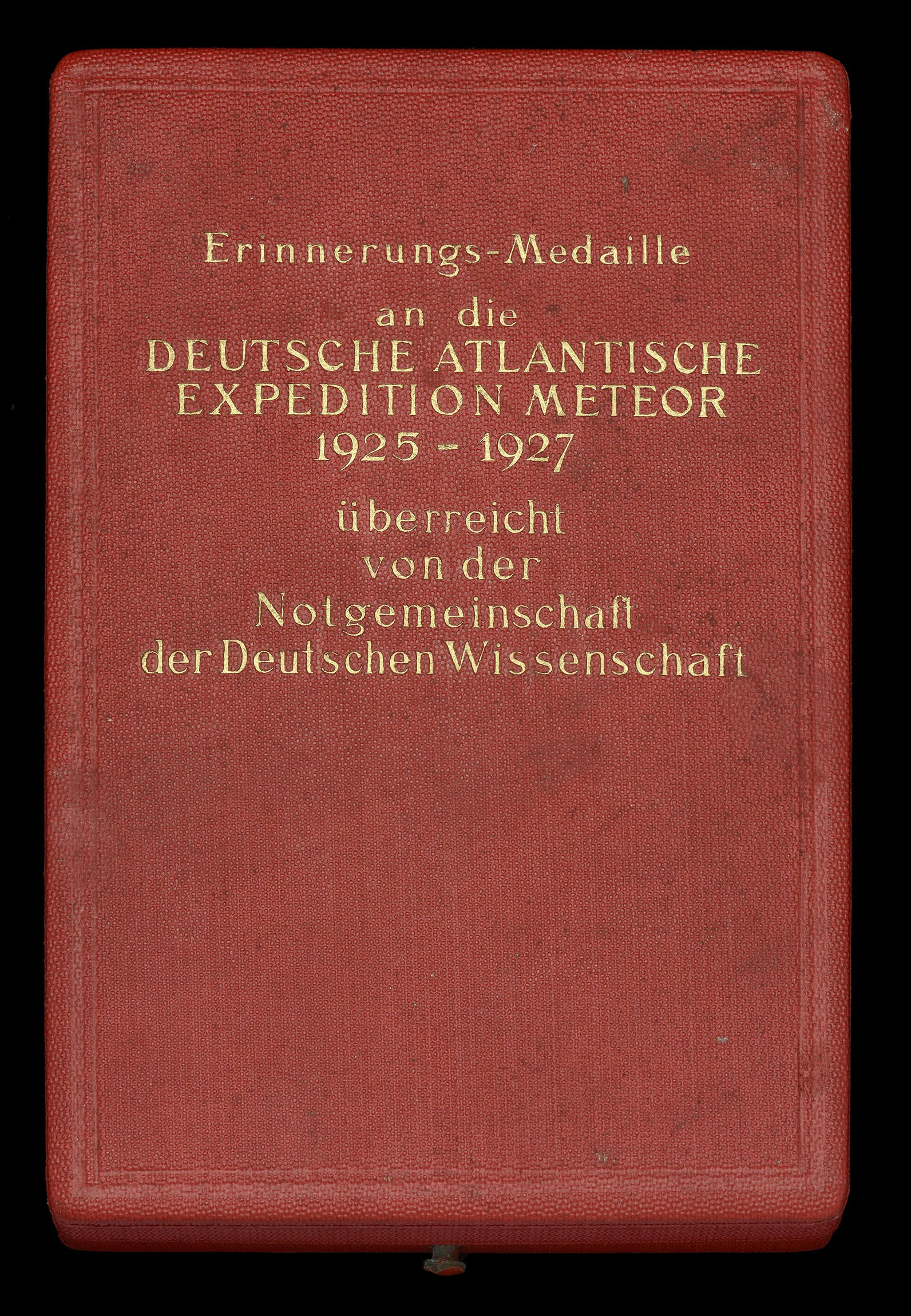Germany, Weimar Republic, Atlantic “Meteor” Expedition Medal 1925-27, 1st class, silver, the edge inscribed, ‘Bayer Hauptmunzamt, Feinsilber’, with silver-gilt oak leaves suspension, in its original gilt inscribed, red leather fitted case of issue, nearly extremely fine, rare £600-£800 --- Issued by the Research Aid Society of German Science, and designed by the Bavarian Mint, 23 1st Class Medals were issued with gilt oak leaves to naval officers and civilian scientists, and 188 2nd Class Medals were issued with silver oak leaves to crewmen. In the aftermath of Germany’s defeat in the Great War, in a period of political and economic chaos, emerged one of the most important oceanographic expeditions of the 20th century, an expedition made possible by the establishment of the German Scientific Research Aid Council in 1920, a body charged with salvaging the pride of the country’s scientific research establishment. And it was in the spirit of that stated aim, in 1924, that Vienna-born oceanographer, Professor Alfred Merz of Berlin University, asserted that the ocean offered an open door of opportunity for exploration - that a well-planned voyage would invite solutions to many important questions of the deep - a view shared by the Council’s president, who quickly gathered the required support. As a result, the Meteor was fitted out for just such an expedition, a brigatine rig being put in place to reduce her reliance on fuel. Commanded by Kapitän zur See F. Spiess, with Merz heading the scientific agenda, her specially trained crew numbered 123 men, including 10 officers, 29 Petty Officers, 78 ratings and 6 civilians - given that the Medal was awarded to a total of 211 recipients, it must be assumed that some of these men were exchanged during the course of her voyage, and that other individuals indirectly connected with the expedition were also eligible for the award. In any event, the Meteor departed in April 1925 and conducted a shake-down cruise to the Canary Islands to ensure readiness for the voyage. Afterwards, a strenuous around the clock programme of scientific measurements was undertaken: water temperatures, depths, atmospheric observations and collecting water samples and marine life. In the end, the Meteor criss-crossed the Atlantic on no less than 14 occasions, from the northern tropics to Antarctica, and, using the ship's early sonar, profiles of the ocean floor were created between 20º N and 55º S. In addition, the expedition established 310 hydrographic stations and made 67,400 depth soundings to map the topography of the ocean floor, and released over 800 observation balloons, while an analysis of 9,400 measurements of temperature, salinity and chemical content at varying depths established the pattern of ocean water circulation, nutrient dispersal and plankton growth - a notable discovery during this survey was the extension of the Mid-Atlantic Ridge around the Cape of Good Hope towards the Indian Ocean and the Meteor was also the first to record an entire ocean's currents and make extensive studies of surface evaporation. By the time of her return to Germany in May 1927, Meteor had spent 512 days at sea and sailed over 67,500 nautical miles, thereby achieving a victory in peace for science and for Germany. The above information has been based on research undertaken by Glenn M. Stein, F.R.G.S.






